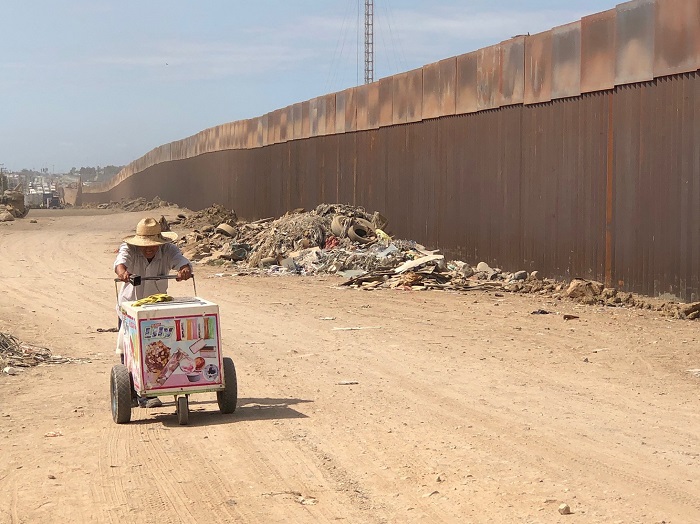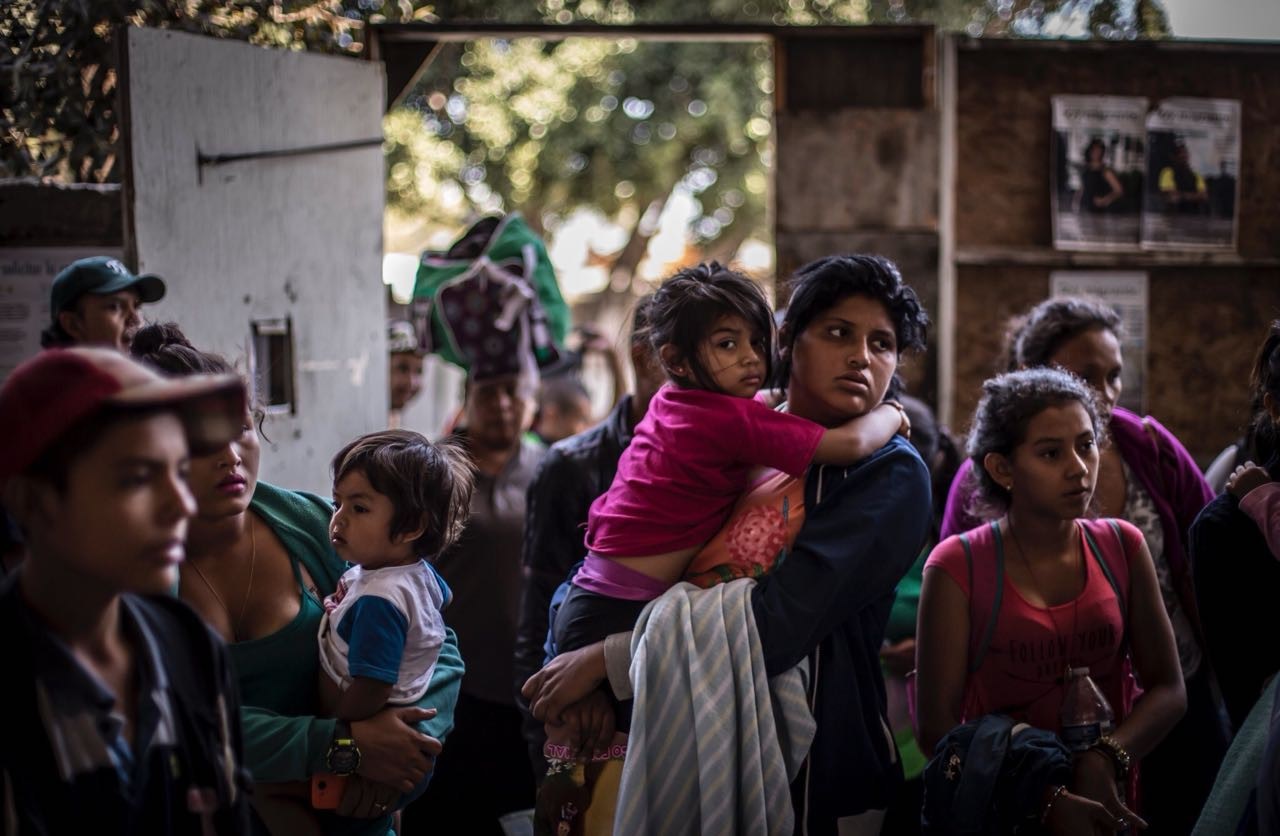
Migrant Caravan Omar Martínez / Cuartoscuro.com
“Underlying the complexities of sanctuary's evolving role within civil society, the sanctuary covenant that gathers us into a people of peoples remains clear and present. Here in the borderlands, we join the generations that stand at Sinai. We hear ourselves called to become a people that hallows the earth — not by ritual or sacrifice, but by fulfilling our task as co-creators of humanity. At every turn we see that humankind has not yet been fully formed into an image of the Holy; many among us are violated. And, standing with the generations at Sinai, we also see that entering into full community with the violated is the way that heals humanity into one body. The communion that unites us is sanctuary.” Jim Corbett, Quaker
I visited a migrant refugee shelter in Tijuana in early October, children and their mothers gathered in the courtyard, the children played and colored in coloring books. There was laughter and volunteers and shelter residents chopped and cooked lunch together. Sunlight streamed through the window and the women and children greeted us warmly.
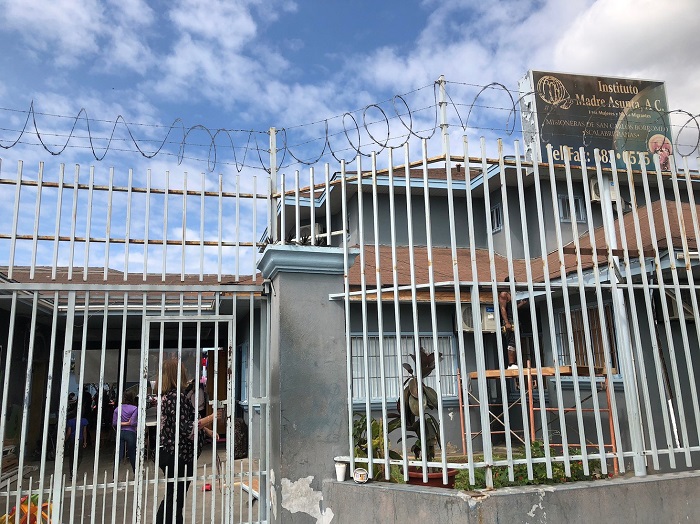
Mary, the manager of the shelter, told us that the children are safe there, and seem happy, but so many of them have seen unbearable violence. One saw a young child burned to death; another was kidnapped, but was able to escape; another was nearly killed by gangs. She said the children and mothers have an extraordinary level of resiliency.
She said that the shelter was opened in the 1980s. In the 1990s the Clinton administration deported an average of 400 people per day from the U.S. through the Tijuana crossing. During the Bush administration up to 400 to 600 people were deported per day through that crossing. Now about 100 people per day are deported through Tijuana, similar to figures during the Obama administration.
The shelter still offers safe passage for deportees, but many more residents are fleeing violence in Central America and places like Michoacán in Mexico and seeking asylum in the United States. For most of them, the violence and poverty they flee is threatening enough that they are compelled to risk whatever violence and hardship they may face in the United States. U.S. foreign policy has contributed directly to the conditions that have led to the recent exodus of migrants from Central America, including upholding fraudulent elections in Honduras and refusing to speak out about worsening human rights conditions in Guatemala.
For example, the repression of Honduran citizens by security forces following contested elections last year has fueled forced displacement and migration of that country’s citizens. The U.S. backed that repression by recognizing the government of President Juan Orlando Hernandez, despite highly questionable elections, evidence of corruption, and human rights violations. These acts follow after decades of support by the U.S. of repressive policies and governments in Central America.
The shelter used to offer shelter for 15 days, as that was the wait to be considered for asylum, but the waits are much longer now, so the mothers and their children stay up to a month or a month and a half. Under international law, the U.S. is required to let asylum seekers with credible cases in. But only 2 percent end up receiving permanent residency. Recently policy has changed so that when asylum seekers are released in the U.S., they are just let out of the crossing without even a ride, they are given papers to be in the United States for three months, and Immigration and Customs Enforcement (ICE) puts ankle monitors on them.
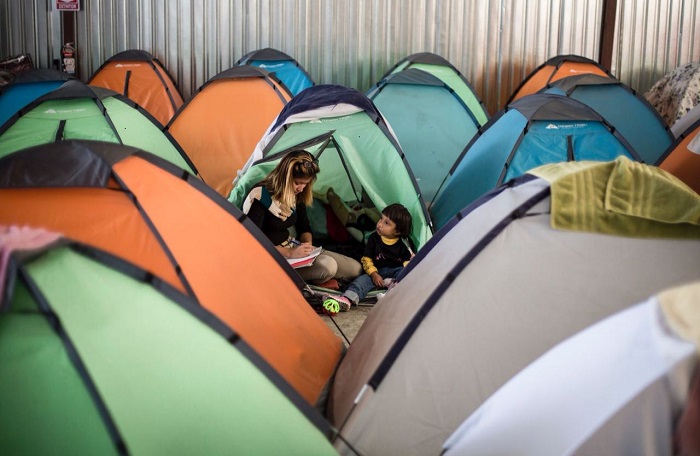
The shelter offers legal resources, psychological support, medical care, and three meals per day — sanctuary on their path. The migrants risk family separation, detention, xenophobia, anti-immigrant violence, and deportation as they enter the U.S. All the current residents of the shelter and those on the migrant caravan seek is the freedom to seek sanctuary, a home free from extreme violence and depravation. They seek peace.
There are many communities in the U.S. willing to open their hearts and resources to welcome them. What if, instead of characterizing folks seeking home as “threats” or “invaders,” we understood them to be our neighbors, that our futures are interlocked and that how they are treated is connected to the well-being of us all? What if we understood love as not constrained by borders or walls, but abundant, and that caring for one another and those most violated by systemic oppression and U.S. policy is the pathway toward liberation for us all? What if we, as people of conscience and faith, greeted the migrants at the border as our brothers, sisters, and kin, opened our homes and communities to them, and greeted them as resourceful contributors to figuring out the planetary threats we currently face together?
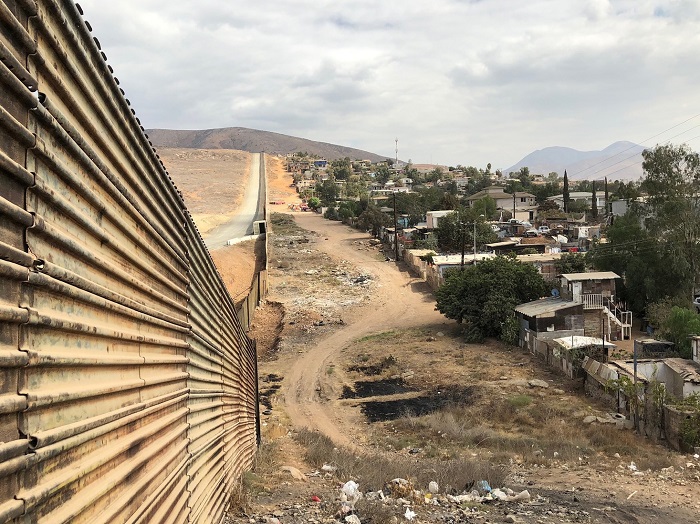
After our time at the shelter, we visited the border wall. We stopped first at the site of Trump’s wall prototypes, eight wall sections built as demonstrations for the longer wall or fence. Each one cost about $500,000 to build, a total of $4 million. Evidently each of them was flawed, all of them could be scaled and breeched. Beyond the new border wall built with haste and focus by this administration is the last border wall, with patches everywhere: It was paper thin and was easy to create holes to crawl through. Now the looming fence is much taller, dangerous, and daunting.

On the new fence is an old sign: an image of a man drowning, but at that spot in the wall, there was no water for miles, but I could feel the hate demonstrated by that wall, a colossal flood which is drowning too many. There were power lines from Tijuana crossing the border, a metaphor: goods, resources, and power can cross the border freely, just not people.
We visited a site where they were building the replacement wall. We were greeted by two women. One said the house that was on the site of the border had been saved due to intervention and that their house would not be knocked down, and the old wall would be left standing near their house. The other said that their father was grateful that the border patrol would not knock down the shrine he had built that was next to the site of the new wall. We visited the house and the shrine. Workers were adding wall segments near the shrine, which stood sturdily resisting the encroachment. There was an opening in the wall they were beginning to fill, and there was a tree spreading its branches in the gap in the wall. I thought even the trees try to stand in the way of the wall. But they get violated, just as people do, as the wall goes up, violently separating people and the land.
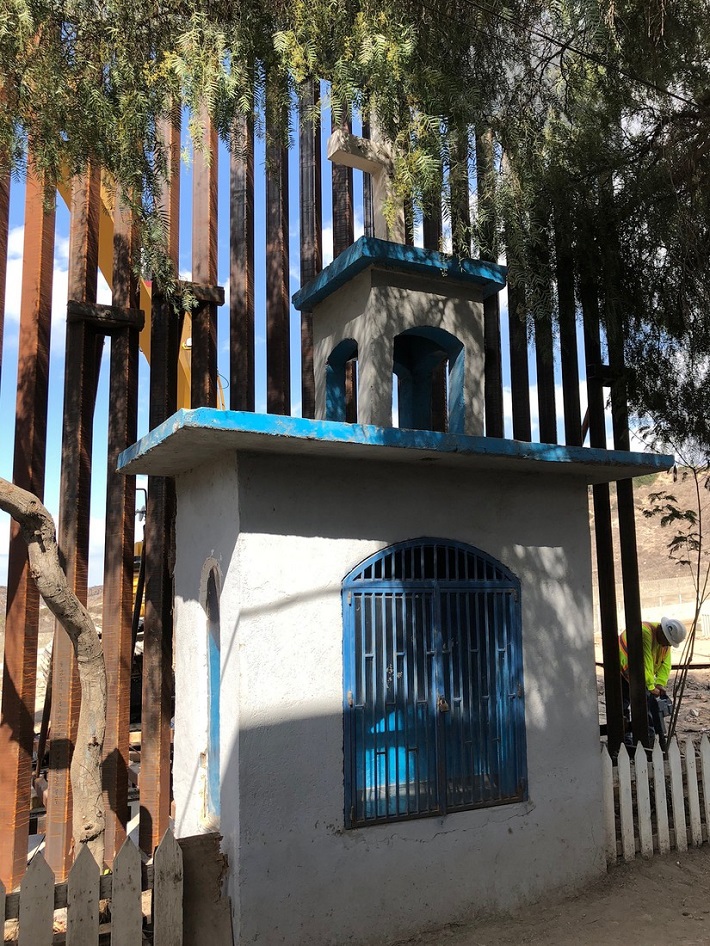
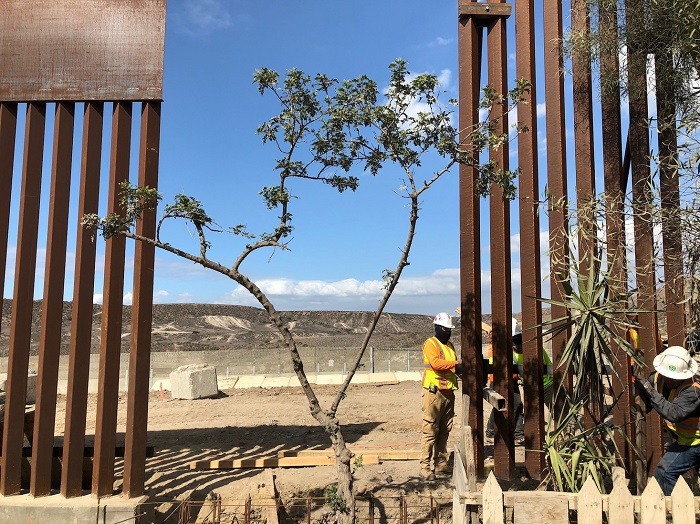
Our last site visit was to the portion of the wall near the sea. Friendship Park is there, a bi-national park offering resistance to the existence of the wall. There is a bi-national garden tended by folks on both sides of the fence. There are paintings of butterflies, and folks scaling the wall. Pedro told me that as this new wall is built, portions of the wall that remembered those who died trying to cross have been knocked down. Even remembrance of the victims of the border wall is being demolished in its current iteration.

It was moving to stand next to the wall and feel the spirit of people coming there year after year to see their relatives, to reach across the chasm being built to find unity and resist the hate the wall represents. As a Quaker, the wall stands against all that I believe: I believe there is that of God in every person; systems of separation and disconnection are evil and deny a fundamental truth that casting others out or denying them welcome stands in the way of apprehending God.
I believe, with Jim Corbett, that we hallow the earth by recognizing humanity as one body and that communion rests with this recognition. What if instead of a wall and a flood of exclusion and hate we met our migrant kin with a flood of empathy and love? What if we knew they were like Elijah coming for dinner, offering wisdom when we offer them a seat at the table? I envision a flood of such love greeting the migrant caravan, these asylum seekers, ready to knock down these walls, and co-create human community in the wreckage of walls and systemic oppression.

What kind of gathering might we have at the border, if we understand that now we have a moment in which to enact a vision of society beyond walls and borders, beyond white supremacy and hate? Like migrants taking one another’s hand through the border fence, let us hold each other and stand for such a vision. Let us open our hearts and break huge doors in these walls. Let us pray with our lives to make it so.
